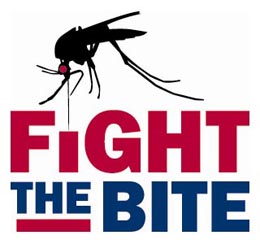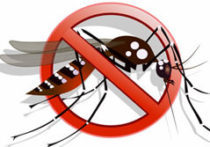Larviciding is the first line of defense in mosquito control. The Garland Health Department uses several different types of larvicides to help reduce the possibility of mosquito breeding throughout the city.
Larvicides can be applied in numerous forms to almost all types of bodies of water. Below are the larvicides that the health department uses on a daily basis:
Agnique Altosid BVA Oil Sustain Spheratax
The GHD obtained funding for larviciding equipment to be used in neighborhoods throughout the city beginning this summer. The equipment is called a Buffalo Turbine and is a truck-mounted unit that disperses larvicide into the air. This method allows larvicide to reach areas that were previously inaccessible by staff. It differs from our adulticide in that it is not a pesticide, but a biological product that keeps mosquitoes from breeding in standing water in all areas. It also differs from our adulticiding operations in that it is operated during daytime hours, so residents may see this truck in their neighborhoods. It is not harmful to insects, animals, humans, or vehicles. Residents might see a slight dusting on vehicles but it can be rinsed off with water. Details on VectoBac WDG, the biological larvicide being used, can be found here.
Adulticiding activities
With the introduction of West Nile Fever, there have been debates concerning the need for spraying chemicals to control the adult mosquito population. It is the GHD’s policy to be proactive and apply insecticide by truck-mounted equipment when surveillance shows high mosquito populations in a specific area. Mosquito trapping is conducted several times per week and is based on areas of confirmed  virus activity. The trapped mosquitoes are sent to the Dallas County Health and Human Services laboratory or the Texas Department of State Health Services laboratory where they are tested for the presence of West Nile Virus and other diseases.
virus activity. The trapped mosquitoes are sent to the Dallas County Health and Human Services laboratory or the Texas Department of State Health Services laboratory where they are tested for the presence of West Nile Virus and other diseases.
Below is a link to a map displaying various mosquito spraying and monitoring activities conducted by the health department. This map shows the locations and dates of sections of the city that have been sprayed and also shows areas that are going to be sprayed during the next seven days. The actual day the area will be sprayed is dependent on weather conditions as well as pesticide applicator availability. In addition, the map shows the locations of mosquito trap sites and whether any of the trapped mosquitoes at a particular site tested positive for WNV.
Garland currently uses one chemical when spraying for mosquitoes, Envion 30-30. This chemical is diluted with water prior to application and the active ingredient is permethrin. Most spraying is conducted between 9 p.m. and 6 a.m. when most residents are inside. The label for this chemical can be found here.
Mosquito trapping is done year-round but increased in late spring and continues until mosquito activity decreases, typically in early fall. Spraying activity will begin once increased activity is noted and/or positive cases of West Nile Virus are reported.
The city conducts “enhanced spraying” as recommended by the Centers for Disease Control. This means that a grid that requires spraying will be sprayed more than once, hopefully on consecutive nights to effectively reduce adult mosquito populations.
Information provided by the city of Garland.


